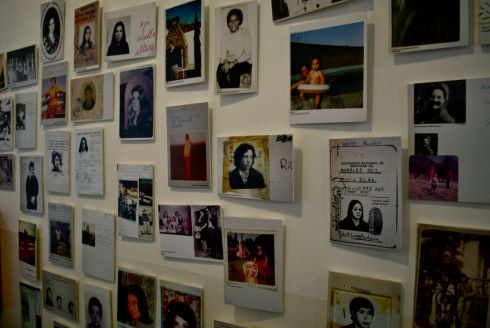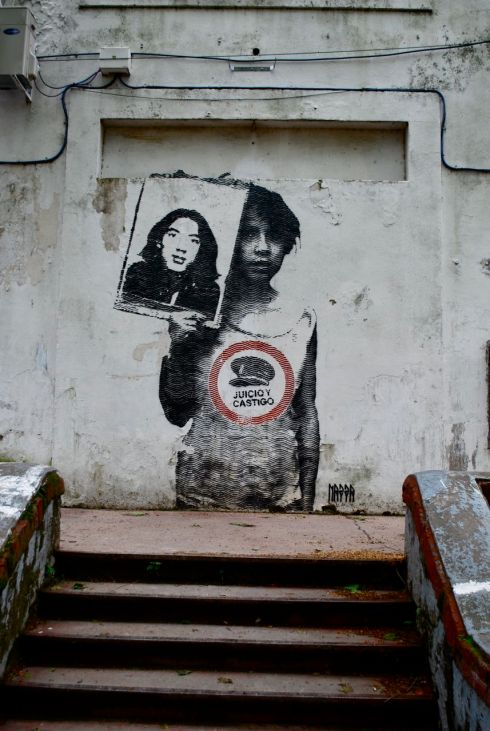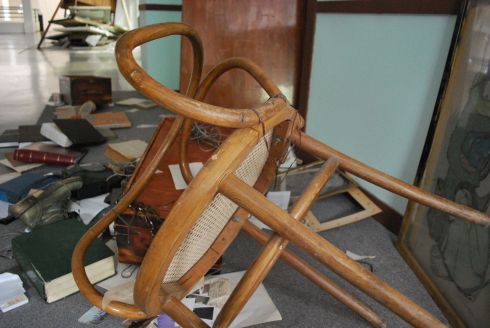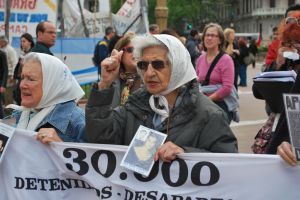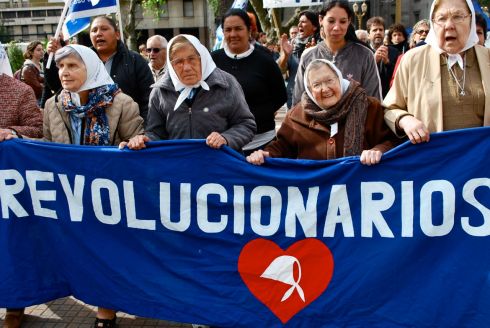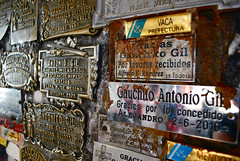Buenos Aires
[by Jeremy]
“And this is where they brought the trucks in and loaded the tortured, bloody bodies on board before driving them to the airport, flying them out over the Rio Plata and throwing them in to the sea. Around 5000 people passed through here, only 200 or so survived,” says trade union and political activist – and an old friend of ours – Gustavo Granero.
This place definitely isn’t on the usual tourist agenda and yet it is hard to understand today’s Argentina without understanding how it has confronted – and risen anew from – its brutal, relatively recent, past.
We are at the ESMA complex, a vast former Naval academy in the north of Buenos Aires that was the most notorious of over 400 detention and torture centres established during the period of brutal military dictatorship between 1976 and 1983.
Today it is a peaceful, picturesque, tree-lined space devoted to keeping alive the memory of those who were killed, tortured, beaten and disappeared during what has become known as Argentina’s ‘Dirty War’.
Now called the ‘space for memory and human rights’ it’s a centre for social movements, poignant political art works, progressive film shows and, importantly, a massive archive of documents relating to the ongoing fight for justice for the victims.
It is also a remarkably moving reminder of the human rights abuses that were carried out here – and across Argentina – on an unimaginable scale.
The dictatorship came to power during a period of economic and political turmoil – in which protests, strikes and political violence left hundreds dead – following the death of president Juan Perón.
Army commander Jorge Videla seized power, promising a war against “left-wing terrorism”.
In reality he led a movement committed to a brutal, economically neo-liberal, socially conservative, militarised, Catholic agenda which needed to remove all opposition, deemed “terrorists”, in order to implement its plan.
To Videla, a terrorist was not defined as someone who threw grenades, but anyone who opposed “western, christian values” or economic liberalisation, including trade unionists, students, journalists, left-wing activists, and anyone suspected of ‘sympathising’ with them.
Initial details about the fate of ‘the disappeared’, as they became known around the world, came from the accounts of those few who lived to tell the tale. Many of their stories are imprinted on the walls of ESMA today.
People suspected by the military of being “subversive” would be abducted in raids by plain-clothes men. Homes were raided in the middle of the night. Families were left with nothing but the screams of their loved ones.
Once kidnapped, they would be taken to one of more than 400 detention centres. Many were horrifically tortured. Children were tortured in front of their parents and parents in front of their children.
Thousands of political prisoners were drugged, stripped naked, loaded onto military planes and thrown out over the Atlantic Ocean.
The dictatorship did not discriminate: men and women, teenagers and adults, even the unborn were targeted.
In one notorious incident, 60 students from Manuel Belgrano High School, in Buenos Aires, were disappeared simply for having joined their student council. The abductees were taken to clandestine detention centres, where the majority of them were tortured and killed.
Human rights groups estimate around 30,000 people were ‘disappeared’ during the dictatorship.
Around one-third of those were women. Some were abducted with their small children. Others were pregnant, or became so while incarcerated, often through rape by guards and torturers.
Pregnant prisoners were kept alive until they had given birth. Sometimes the mothers were able to nurse their newborns for a few days, or even weeks, before the babies were taken from them and the mothers were murdered.
According to human-rights groups, as many as 500 newborns and young children were taken from disappeared parents and handed over, their identities erased, to childless military and police couples, people connected to government agents or others favoured by the regime. To this day organisations, operating from the ESMA complex, are helping families to reunite with their stolen relatives.
In a recent high-profile case, one of the country’s top activists – whose daughter was killed after having her baby snatched by the regime – was reunited with her lost grandson.
The military did its best to ensure that no-one would ever be brought to justice for such crimes.
In September 1983 the ‘National Pacification Act’ was passed, granting impunity to the state by claiming that the military’s actions were a result of an “anti-subversive war”.
Following the collapse of the junta in the face of massive protests, strikes and trade union action, an unprecedented Truth Commission was set up and its 1985 report ‘Nunca Más’ (‘Never Again’) led to the trials and jailing of nine former junta leaders.
But in 1986 President Raul Alfonsín, feeling threatened by the military unrest that followed the trials, passed a new law called Full Stop, which halted all investigations of political violence during the Dirty War.
In 1990 Alfonsín’s successor, President Carlos Menem, pardoned and released the imprisoned junta leaders.
Only in 2003 did the new government of Nestor Kirchner scrap the amnesty laws, opening the door to prosecutions and to some semblance of justice. Even then it took a further two years before the Supreme Court upheld the overturning of the amnesty laws.
The national memory archive, based at ESMA, is today helping that quest for justice – by collecting testimonies and evidence, keeping the memory alive and helping the victims and their families.
Alongside the powerful emotions that a visit to ESMA provokes, one of the most poignant sights in Buenos Aires is undoubtedly seeing the mothers and grandmothers of the disappeared taking to the streets in the name of their lost loved ones.
The Madres de Plaza de Mayo was created in 1977 by mothers searching for children detained by the military regime. They began gathering in front of the Casa Rosada presidential palace every Thursday to march around the square, wearing white headscarves embroidered with their missing children’s names.
After 37 years the remaining members still turn out every week, walking slowly around the plaza, some reading out the names of the missing, hoping they can find out exactly what happened to them and supporting the current government’s drive to ensure that those who perpetrated this most savage of crimes face justice. They are a symbol of the struggle for the heart and soul of Argentina.
Because despite all the progress of recent years, today there is still a struggle.
On the one side you have the current progressive government (for all its imperfections), trade unions, social movements and the families of the disappeared. On the other, the right-wing media conglomerates, the vulture funds and the descendants of those who participated in, stayed silent during, or actively collaborated with the dictatorship and whom – by various means – want to achieve the same neo-liberal nightmare.
Through it all the Madres de Plaza de Mayo continue to gather defiantly behind their banner: ‘Ni un paso atrás’, not one step back!
Days: 1,116
Miles: 25,587
Things we now know to be true: Silence is not an option.

